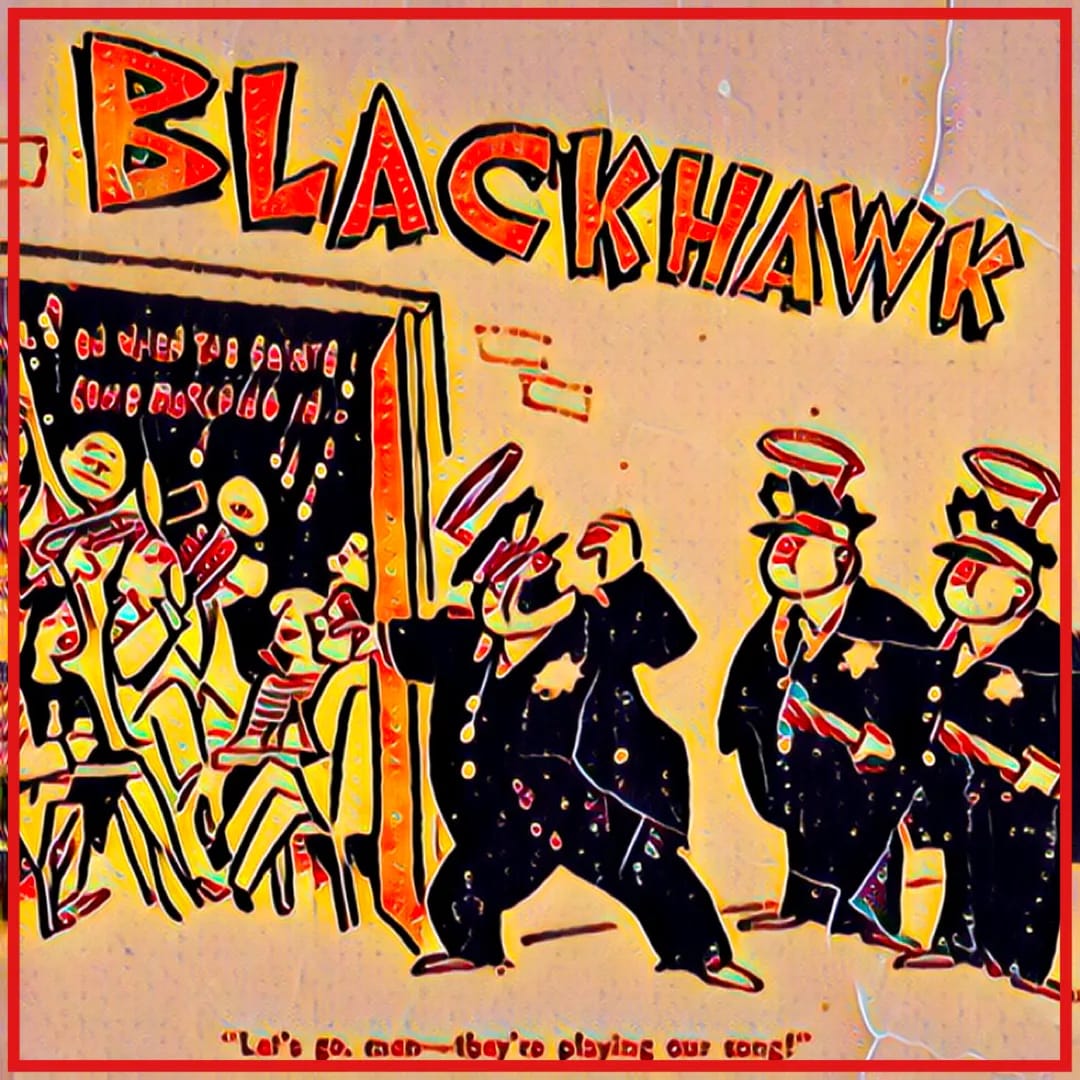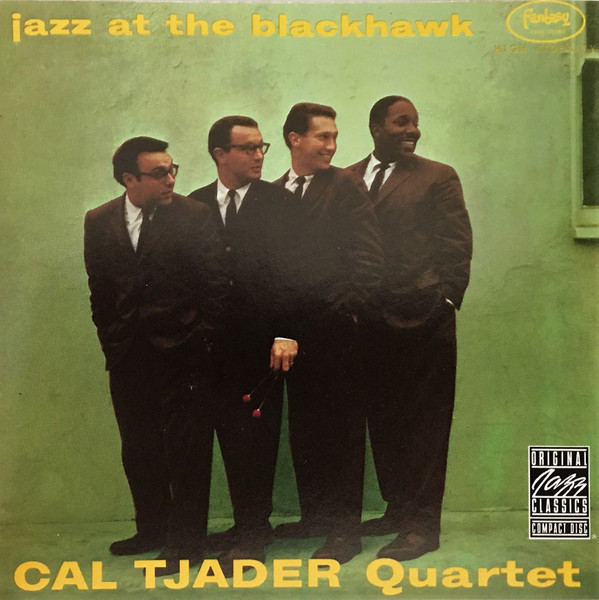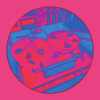Home » Jazz Articles » History of Jazz » Jazz at the Blackhawk: Reflections of Cal Tjader’s First...
Jazz at the Blackhawk: Reflections of Cal Tjader’s First Live Album
The fine sense of dynamics and vivid imagination displayed (on Jazz at the Blackhawk) make for excellent listening.
—Billboard, 1957
Cal Tjader first came onto the San Francisco jazz scene after returning from U.S. Navy service and meeting future jazz great Dave Brubeck while each was attending San Francisco State (University) in the early 1950s. Over the next decade, the two future Grammy award-winning artists would navigate successful jazz careers as part of a young trio, then as individuals, with the Blackhawk playing a significant role in their development and popularity. Cal Tjader would ultimately record five live albums at the historic venue and was the featured entertainment during the Blackhawks' final two weeks of operation in July 1963.

More Wires
True jazz lovers, young and old, went to the Blackhawk for great music. The dank and dusty 200-person capacity Blackhawk was a great-sounding room, although better seen in the dark. The club had a reputation with patrons and authorities. San Francisco city officials tried numerous times to shut the Blackhawk down, conducting police raids on at least two occasions, but to no avail. The club was one of the few in the city to allow minors, albeit behind a wall of chicken wire separating them from the club's adult patrons and a full-service bar.According to B. Rose on The Cal Tjader Sextet A Night At The Blackhawk liner notes from 1958, "The Tjader audience is a curious amalgam of Jazz, Latin and dance fans. They range from youngsters just barely old enough to use their own I.D. cards in a night club to grey-haired oldsters."
Cal Tjader's first live album, Jazz At The Blackhawk was recorded at the end of a month-long run of shows the combo did at the club, culminating on Sunday, January 20, 1957. The group consisted of Tjader on vibraphone, Vince Guaraldi of later Peanuts fame on piano, future Dave Brubeck bassist Gene Wright, and Al Torre on drums. "We played six nights a week at the Blackhawk," recalls Torre, now 92 and living in Southern California. "We were the "home band" for the club. The night of the recording was just another night but with more wires."

The Blackhawk Sound
The evening of January 20th, 1957 was "under the personal supervision of John Noga and Guido Cacianti with incidental assistance from S. W. Weiss and J. W. Easton." -as stated in the credits of the May 1957 Fantasy Records mono (red vinyl) LP 3241 album liner notes. Noga and Cacianti were owners/proprietors of the Blackhawk, with Weiss having an interest in Fantasy Records. The recorded performance that night has become one of the Blackhawk's most notable live albums. "What you hear on the record is exactly what we did that night," says Torre. "Tjader never had a set list; he'd just start playing, but was a stickler about the group sound." And the Blackhawk was known for its' sound. "I saw Miles Davis there too, incredible sound. The room had no echo. There was cloth hanging on the ceiling, which helped absorb the noise. It was just good acoustics. The Black Hawk had good acoustics."According to longtime San Francisco Chronicle Jazz Critic Ralph J. Gleason, who was present during the recording of Tjader's album, "Fantasy's recording engineers set up the tape machines in the Blackhawk's No. 1 dressing room, rigged the bandstand for sound, and went to work." Tjader later said his group had "never been recorded better." Following Jazz at the Blackhawk, the venue would house a "Stereo 6 channel mixing panel cross-mixed to an Ampex 350" better capturing the clubs' unique acoustics and natural reverberation and giving later live albums by Miles Davis, {{Shelly Manne]], and Dave Brubeck the Blackhawk sound.

A Night In the Life
As for Blackhawk proprietors John Noga and Guido Cacianti, their roles were to keep "the bells" from ringing during the Sunday night business-as-usual recording session, mainly the phone and the cash register. The two men "supervised operations from behind the bar," Gleason notes on the album. "During the recordings, it was Guido's responsibility to make sure the telephone bell didn't ring, and with the exception of a single goof, he performed this task admirably. John Noga was responsible for making change quietly and not ringing the cash register whose shrill tone, while music to some ears, clashes with the overtones of the vibraphone." However, despite the Blackhawk being known for one the strictest shut-up-and-listen policies among the Bay Area performance clubs, you can still hear the patrons talking, the glasses clanging, and "the bells" ringing, most notably, twice on Side Two, Track 2; "I've Never Been In Love Before," -sonically capturing the Blackhawk as a working 1950s jazz club (note: these "atmospheric" sounds were removed from the later remastered CD version).The atmosphere of the scene is what Al Torre recalls with vivid senses the most. "During intermission, I would step out and get some fresh air or go up Hyde Street to the Lafayette Hotel Cafe and get a burger. The chef looked like Boris Karloff, but he made the greatest hamburgers in the world. I had to get out and clear my lungs. There were about 75 different types of cigarette smoke and poor ventilation. They would smoke the crowd out (of the Blackhawk) in between sets." Although it was just another night to some, the evening is noted as a "great success" which Ralph Gleason attributed to the "liveness of the group sound, the good acoustics of the club and excitement of recording before a jazz audience," with the quickly developing technology of portable tape machines "making it possible to bring the studio to the musicians in their natural habitat."

Pave Paradise
More than sixty-five years later, the long-darkened Lafayette Coffee Shop neon hangs a few doors up from the parking lot at 200 Hyde Street where only diminishing memories of the smokey club remain. The former location of the "Center of West Coast Jazz" was marked with a plaque in 2012 -the only hint of the sites significance. Fortunately, live audio recordings, such as Jazz at the Blackhawk from 1957, offer more than just a hint of memory to the culturally pivotal moments and historic places lost to music history.
According to Cal Tjader drummer, Al Torre, "The album cover was taken when we got off a plane at Burbank Airport. We flew in and were met by a representative of Fantasy Records and photos were taken outside a building. So now you know, the cover was taken somewhere at the Burbank Airport."
Jazz at the Blackhawk by the Cal Tjader Quartet
Released: May 1957, Fantasy Records, San Francisco, California
Recorded: January 20, 1957 @ The Blackhawk, San Francisco, Calif.
Cal Tjader, vibraphone; Vince Guaraldi, piano; Gene Wright, bass; Al Torre, drums.
Sources:
- Torre, Al. Jazz at the Blackhawk, drummer. Phone Interview by Geo Thelen. Thelen Creative, March 2023
- Gleason, Ralph. The Cal Tjader Quartet -Jazz At The Blackhawk, Liner Notes, Fantasy Records LP 3241, 1957
- Rose, B. The Cal Tjader Sextet -A Night At The Blackhawk, Liner Notes, Fantasy Records LP 3283, 1958
- Bang, Derrick. Vince Guaraldi at the Piano, McFarland & Company, Inc., Publishers. North Carolina, London. 2012
- San Francisco History Center, San Francisco Public Library, Uptown Tenderloin Historic District
- Thelen Creative Collection
< Previous
Duration Show - Joshua Abrams, The Ne...
Next >
Big Ears Festival 2023
Comments
Tags
History of Jazz
Cal Tjader
Geo Thelen
Johnny Mathis
Dave Brubeck
Vince Guaraldi
Gene Wright
Al Torre
Miles Davis
For the Love of Jazz
 All About Jazz has been a pillar of jazz since 1995, championing it as an art form and, more importantly, supporting the musicians who create it. Our enduring commitment has made "AAJ" one of the most culturally important websites of its kind, read by hundreds of thousands of fans, musicians and industry figures every month.
All About Jazz has been a pillar of jazz since 1995, championing it as an art form and, more importantly, supporting the musicians who create it. Our enduring commitment has made "AAJ" one of the most culturally important websites of its kind, read by hundreds of thousands of fans, musicians and industry figures every month.























